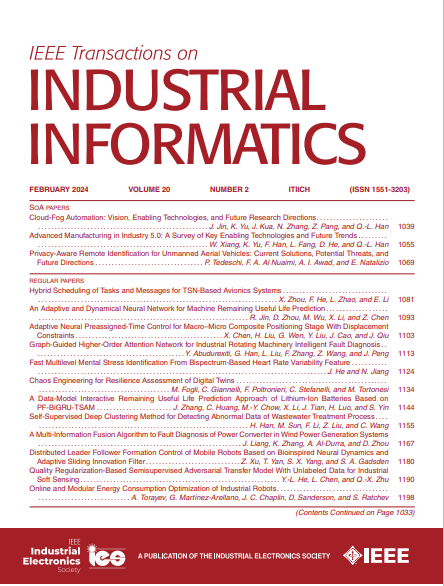上肢运动序列分析:从孤立到序列
IF 9.9
1区 计算机科学
Q1 AUTOMATION & CONTROL SYSTEMS
引用次数: 0
摘要
运动技能是通过连续的动作而不是孤立的动作来完成的。然而,从生物信号中解码这些序列是一个重大挑战。为了解决这一差距,本研究将运动解码从在孤立的时间窗口中对运动进行分类转变为对连续运动进行分割。该算法对肌电图(EMG)序列进行从粗到细的分割。它从帧级分割开始,并在运动级定位近似边界。然后设计了一种受区域增长启发的融合策略,将粗分割和定位结果结合到精细输出中。在自我收集的肌电图数据集上的实验显示,在参与者依赖/独立设置的分割运动方面取得了令人印象深刻的结果(准确率:94.2{\%}/74.7{\%}$;骰子系数:$92.5{\%}/61.7{\%}$;意味着十字路口在联盟:$ 80.9{\ %}/{\ %}$ 51.9)。进一步的分析表明,该算法能够捕捉参与者运动序列中的自然节奏。这项研究为深入了解运动序列铺平了道路,这有利于各种应用,如康复工程。本文章由计算机程序翻译,如有差异,请以英文原文为准。
Upper Limb Motor Sequence Analysis: From Isolated to Sequential
Motor skills are performed through sequential movements rather than isolated actions. Yet, decoding these sequences from biosignals poses a significant challenge. To address this gap, this study transitions motor decoding from classifying movements in isolated time windows to segmenting sequential movements. The proposed algorithm segments the electromyography (EMG) sequence in a coarse-to-fine manner. It begins with frame-level segmentation and locating the approximate boundaries at the movement-level. A region-growing-inspired fusion strategy is then designed to incorporate the coarse segmentation and localization results for the fined output. Experiments on a self-collected EMG dataset demonstrate impressive results in segmenting movements for participant-dependent/independent setups (accuracy: $94.2{\%}/74.7{\%}$ $92.5{\%}/61.7{\%}$ $80.9{\%}/51.9{\%}$
求助全文
通过发布文献求助,成功后即可免费获取论文全文。
去求助
来源期刊

IEEE Transactions on Industrial Informatics
工程技术-工程:工业
CiteScore
24.10
自引率
8.90%
发文量
1202
审稿时长
5.1 months
期刊介绍:
The IEEE Transactions on Industrial Informatics is a multidisciplinary journal dedicated to publishing technical papers that connect theory with practical applications of informatics in industrial settings. It focuses on the utilization of information in intelligent, distributed, and agile industrial automation and control systems. The scope includes topics such as knowledge-based and AI-enhanced automation, intelligent computer control systems, flexible and collaborative manufacturing, industrial informatics in software-defined vehicles and robotics, computer vision, industrial cyber-physical and industrial IoT systems, real-time and networked embedded systems, security in industrial processes, industrial communications, systems interoperability, and human-machine interaction.
 求助内容:
求助内容: 应助结果提醒方式:
应助结果提醒方式:


